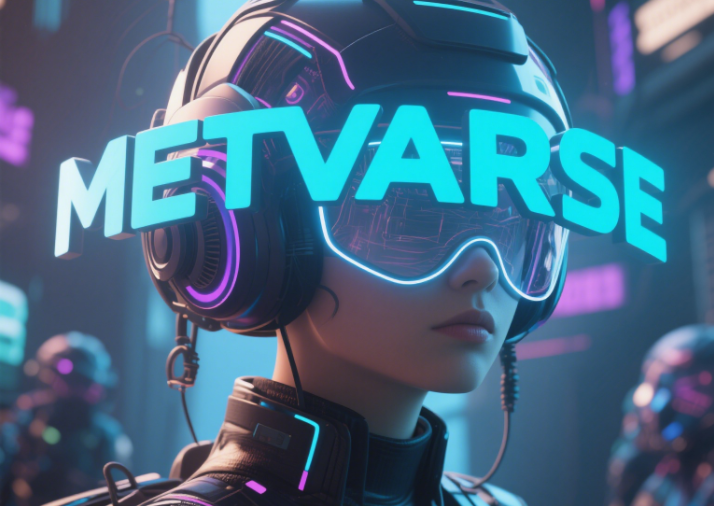By Bitora Team
The metaverse—a decentralized, immersive virtual universe where users interact, work, and transact—has evolved from a sci-fi concept to a $105.4 billion global market in 2024, projected to grow at 46.4% CAGR through 2030 . At its core, this digital frontier hinges on blockchain and cryptocurrency, enabling ownership, scarcity, and interoperability. As a leading crypto exchange and news platform, Bitora explores how these technologies are reshaping virtual economies and why staying informed is critical for investors and innovators.
1. The Metaverse Economy: A Decentralized Renaissance
The metaverse’s economic ecosystem thrives on blockchain-powered digital assets, including:
- Virtual Real Estate: Platforms like Decentraland and The Sandbox allow users to buy, sell, and develop virtual land using cryptocurrencies such as MANA and SAND . For example, Decentraland’s land rental feature enables passive income through smart contracts, while The Sandbox partners with brands like DBS Bank to create carbon-neutral virtual spaces .
- NFTs: Non-fungible tokens underpin digital art, virtual fashion, and in-game items. In 2025, NFTs will dominate metaverse transactions, with use cases spanning identity verification, event access, and intellectual property rights .
- DeFi Integration: Decentralized finance (DeFi) protocols like Aave and Uniswap are merging with metaverse platforms to offer lending, yield farming, and decentralized exchanges (DEXs) within virtual worlds .
Key Trends:
- Interoperability: Projects like Wilder World and Site Network aim to connect isolated metaverse platforms, allowing assets to move freely across ecosystems .
- AI and VR Advancements: Companies like Apple and Meta are investing in spatial computing, enhancing user experiences through AR/VR hardware and AI-driven avatars .
2. Cryptocurrency’s Role in Metaverse Transactions
Cryptocurrencies are the lifeblood of metaverse economies, facilitating seamless cross-border transactions. For instance:
- Utility Tokens: Platforms like Roblox use Robux for in-game purchases, while Fortnite integrates V-Bucks for virtual goods.
- Governance Tokens: DAOs (Decentralized Autonomous Organizations) like Metaverse DAO (MDAO) enable community-driven decision-making, with token holders voting on platform upgrades and funding initiatives .
- Stablecoins: USDT and USDC provide price stability for metaverse traders, reducing volatility risks in virtual marketplaces .
Challenges:
- Scalability: Ethereum’s high gas fees and slow transaction speeds hinder metaverse growth. Solutions like Polygon and Solana are emerging as alternatives .
- Regulation: Governments are scrutinizing metaverse transactions, with the EU’s Markets in Crypto-Assets (MiCA) framework introducing stricter compliance rules .

3. Top Metaverse Crypto Projects to Watch in 2025
As the metaverse expands, several blockchain projects are leading the charge:
- Decentraland (MANA): A pioneer in virtual land ownership, with partnerships in education and virtual events .
- The Sandbox (SAND): Focused on user-generated content and brand collaborations, including Adidas and Atari .
- Wilder World: A Web3 gaming platform integrating AI and VR, backed by Polygon for scalability .
- Lamina1 (LAM): A layer-1 blockchain optimized for metaverse infrastructure, supporting high-throughput NFT transactions .
- Metaverse DAO (MDAO): A governance token for decentralized metaverse projects, projected to reach $0.000139 by 2025 .
Investment Opportunities:
- NFT Marketplaces: OpenSea and Rarible dominate metaverse NFT trading, with daily volumes exceeding $10 million .
- Virtual Real Estate: Prime parcels in Decentraland and The Sandbox sell for hundreds of thousands of dollars, mirroring real-world property trends .
4. The Future of Metaverse SEO and Discoverability
To thrive in the metaverse, brands and developers must prioritize SEO strategies tailored to virtual ecosystems:
- Keyword Optimization: Target terms like “metaverse cryptocurrency,” “NFT in metaverse,” and “virtual real estate” to rank in search engines .
- Content Depth: Create guides, tutorials, and market analyses to establish authority. For example, Bitora’s metaverse news section covers tokenomics, partnerships, and regulatory updates .
- Technical SEO: Optimize metaverse websites for mobile and VR devices, ensuring fast loading times and seamless user experiences .
Why Bitora Leads:
As a trusted crypto exchange and news platform, Bitora provides 实时 market data, expert analysis, and educational resources to help users navigate the metaverse economy. Whether you’re trading MANA or exploring DeFi in The Sandbox, Bitora’s insights empower informed decisions.
5. Challenges and Risks in the Metaverse
Despite its promise, the metaverse faces significant hurdles:
- Interoperability Gaps: Most platforms operate as “walled gardens,” limiting asset portability .
- Security Concerns: Smart contract vulnerabilities and hacking incidents, like the 2024 metaverse platform breach, highlight risks for users and developers .
- Regulatory Uncertainty: Governments worldwide are drafting laws to tax metaverse transactions and protect consumer data .
Conclusion: Bitora—Your Gateway to the Metaverse Economy
The metaverse is no longer a distant future—it’s a $103.6 billion market in 2025, driven by blockchain, NFTs, and decentralized finance . To succeed in this new digital frontier, investors and developers need reliable, up-to-date insights. Bitora delivers comprehensive coverage of metaverse trends, token analysis, and regulatory updates, ensuring you stay ahead in this rapidly evolving landscape.
Join the metaverse revolution with Bitora—where crypto meets the future.
Stay informed. Trade smarter. Explore the metaverse with Bitora.








Leave A Reply